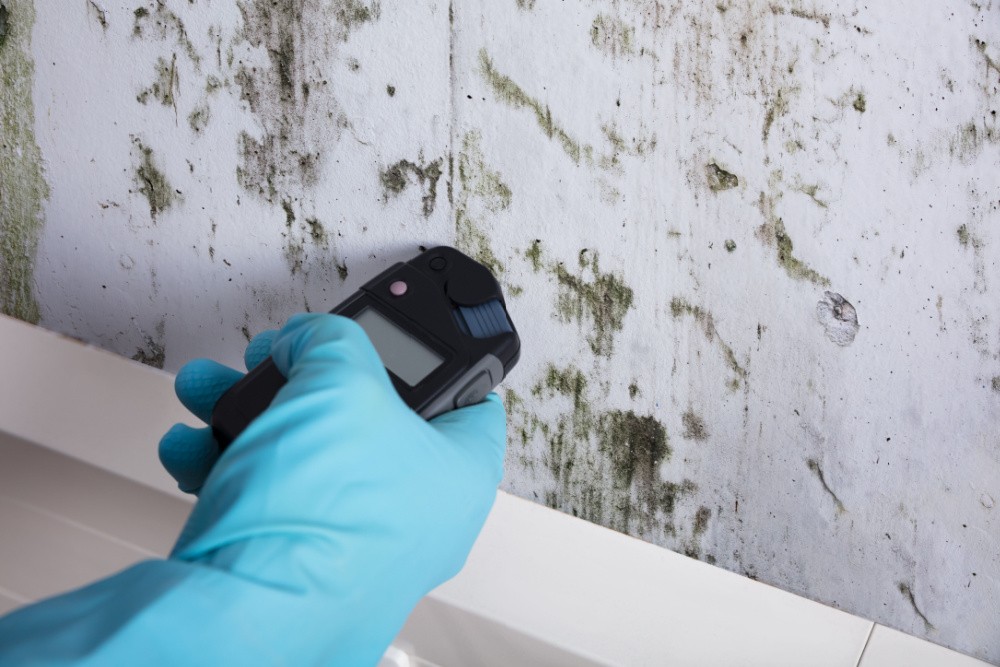BLOG
Mold Test Frequency: How Often Should You Test Your Home?

Mold growth in your home can pose serious health risks and cause significant damage to your property. One of the most important steps in preventing these issues is regularly conducting a mold test to ensure your indoor environment remains safe and healthy. But how often should you perform a mold test? The answer depends on several factors, including environmental conditions, recent water damage, and the age of your home. This article will help guide you on how often to test for mold and why it’s so crucial for the well-being of your family and home.
Why is Mold Testing Important?
Mold thrives in damp, humid environments and can spread quickly if not detected early. A mold test helps to identify hidden mold colonies that might be growing behind walls, under floors, or in other hard-to-reach places. These hidden mold spores can negatively affect indoor air quality, leading to respiratory problems, allergic reactions, and other health issues. By conducting regular mold tests, you can catch mold growth before it becomes a larger problem.
When Should You Perform a Mold Test?
There are specific situations in which a mold test is especially important. For example:
- After Water Damage: If your home has experienced flooding or leaks, mold growth can start within 24 to 48 hours. It’s vital to perform a mold test (Skimmelsvamp test) after any water damage to ensure that mold hasn’t begun to take hold.
- High Humidity Areas: If you live in a region with high humidity, it’s essential to conduct mold tests more frequently. Areas such as basements, bathrooms, or kitchens are prone to mold growth due to constant moisture. Regular testing will help detect any early signs of mold.
- After Renovations or Repairs: If you’ve recently renovated or repaired your home, there may have been hidden moisture issues exposed during the work. A mold test post-renovation can help ensure that no mold has been disturbed or caused by the changes.
- Seasonal Testing: Depending on the season, it might be a good idea to perform a mold test. Winter, when homes are sealed tight to keep in heat, can trap moisture indoors, making it a prime time for mold growth. In warmer months, humidity levels tend to rise, which can also promote mold growth.
How Often Should You Test for Mold?
While the frequency of mold testing will vary based on individual circumstances, here are some general guidelines for how often to conduct a mold test:
- Annually: For most homeowners, an annual mold test is a good practice. This frequency is sufficient to monitor changes in air quality and detect any potential mold issues before they become serious.
- Every 6 Months: If you live in an area prone to high humidity or have experienced water damage in the past, you may want to test for mold every six months. This helps ensure that your home remains free of mold and prevents health risks associated with mold exposure.
- Following Major Water Incidents: If your home has been exposed to water damage due to a flood, leaky roof, or burst pipes, you should conduct a mold test immediately, and potentially several times after the incident to ensure no mold is present or spreading.
- If You Suspect Mold Growth: Even if you don’t notice visible mold, certain symptoms or smells might indicate the presence of mold. If you suspect mold is growing, it’s crucial to test immediately. Early detection can save you from costly repairs and health issues down the line.
What Types of Mold Tests Are Available?
There are several types of mold tests you can use to check for mold in your home, each with its advantages:
- Air Sampling: This is the most common type of mold test. Air samples are collected and analyzed to determine the concentration of mold spores in your home. It’s ideal for detecting mold that may not be visible to the naked eye.
- Surface Sampling: A surface sample, typically taken from walls, floors, or ceilings, is tested for mold growth. This type of test is ideal for identifying mold that is already visible.
- Bulk Sampling: In this test, a portion of material (such as drywall, insulation, or carpet) is removed and tested for mold. This is generally done when there’s a suspicion that mold is hidden behind surfaces.
- Tape Lifting: This method involves applying clear tape to a surface and then pulling it off to collect any mold spores. This sample is then analyzed for the presence of mold.
Conclusion
Testing for mold is crucial to maintain a healthy and safe living environment. The frequency of mold tests depends on various factors, including environmental conditions, history of water damage, and the specific needs of your home. Whether you choose to test annually, bi-annually, or after specific incidents, it’s essential to keep track of potential mold issues to ensure the health and safety of everyone in your home. Regular mold testing will help you catch mold growth early, prevent further damage, and protect your home from costly repairs and health problems.











